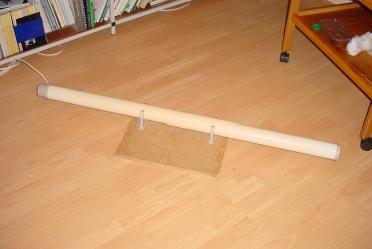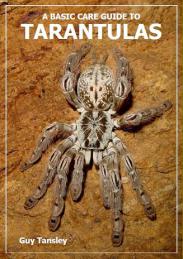
HEATING & HUMIDITY
All tropical spiders require some form
of heating - an ideal temperature range is between 70oF and 80oF. Temperature inside the tank should never fall below 60oF and never rise above 90oF if the spider is to survive. Country of origin
should be considered when establishing the correct environment. There are several alternatives that provide adequate heat.
Ceramic bulbs: This heat source is effective but a reliable thermostat
must be used as they can easily overheat the tank. Ceramic bulbs give off no light which tarantulas abhor - remember that in their natural environment tarantulas would spend the day sealed in their
burrow or arboreal retreat and not emerge until dusk to feed. The bulb should be firmly fixed in the tank hood provided the spider is unable to touch its extremely hot surface. A humidity gauge is
essential with this set up as ceramic heaters will easily desiccate a tarantula.
Heating mats: The position of the mat depends upon the species to be
housed.
Arboreal: The mat should be placed under the substrate and regulated by a thermostat. The air temperature can be heated to 75oF without difficulty and a digital thermometer is recommended. These are more expensive than the conventional dial thermometers but they give an accurate temperature reading. If a thermostat with a probe is used, then this should be positioned alongside the thermometers air temperature sensor. Ensure that the spider doesn't knock it from its position as this will usually bring it into direct contact with the heat source and will fail to operate correctly.
Terrestrial: I have had a few problems using heating mats for ground
dwelling tarantulas and have discovered that the best solution is to attach the mat to the underside of the tank lid. Tarantulas instinctively dig to escape high temperatures and when the mat is on
the floor of the tank, the spider simply becomes warmer. Positioning the mat on the lid works well - keeping the air temperature at around 75oF. Various sizes of heating mats are available to suit
every size of tank and they are quite economical to run.
Heating cables: These are normally used for horticultural purposes (soil warming). Different lengths are available to suit your tanks measurements but again, they must be used with a thermostat. Heating cables are flexible therefore more versatile when it comes to arrangement - they can be placed either above, below or along the sides of the tank to provide a gentle heat of 70oF upwards.
Eventually your spider collection may grow, so a more economical method of heating is not to heat the tanks individually but instead to place them in a heated room. The temperature can be maintained using one or more heaters depending on the size of the room (tubular storage heaters are ideal, see image) and these can be controlled via a thermostat. Pulse proportional thermostats enable a night time drop in temperature which not only reduces running costs but provides the tarantulas with a more natural temperature range.
Humidity: Percentage of humidity required depends on the species to be housed. Try to imitate the spiders natural habitat as closely as possible and adjust the humidity level accordingly. As a general rule, the substrate should always be slightly moist (squeeze a handful in your palm and if water drips out then it's too wet, but if it crumbles then it's too dry). There are exceptions to this rule and information on the individual species requirements should be sought. You can increase humidity by restricting the amount of evaporation from the container and this usually means providing the cage with an additional cover. Holes should be made in this cover to provide the correct mixture of humidity and air flow. Sufficient airflow is essential to prevent mould from growing in the cage and tarantulas certainly benefit from not being kept in cage with high humidity and stagnant air. Balance is the key and experimentation with different housing methods will provide the best results. A large open water dish and regular wetting of the substrate (don't spray your tarantula but introduce water down one corner of the cage) will help maintain adequate humidity and the addition of a gauge will be an advantage. Some species can be allowed to dry out periodically (Hysterocrates spp. For example) but always refer to the recommended housing needs of each species before allowing this. Seasonal changes can also be imitated (again, refer to the spiders country and area of origin) and is sometimes considered essential by keepers if the species in question is to be bred successfully. Humidity levels are crucial when the spider is about to moult, see section on moulting for more information.

